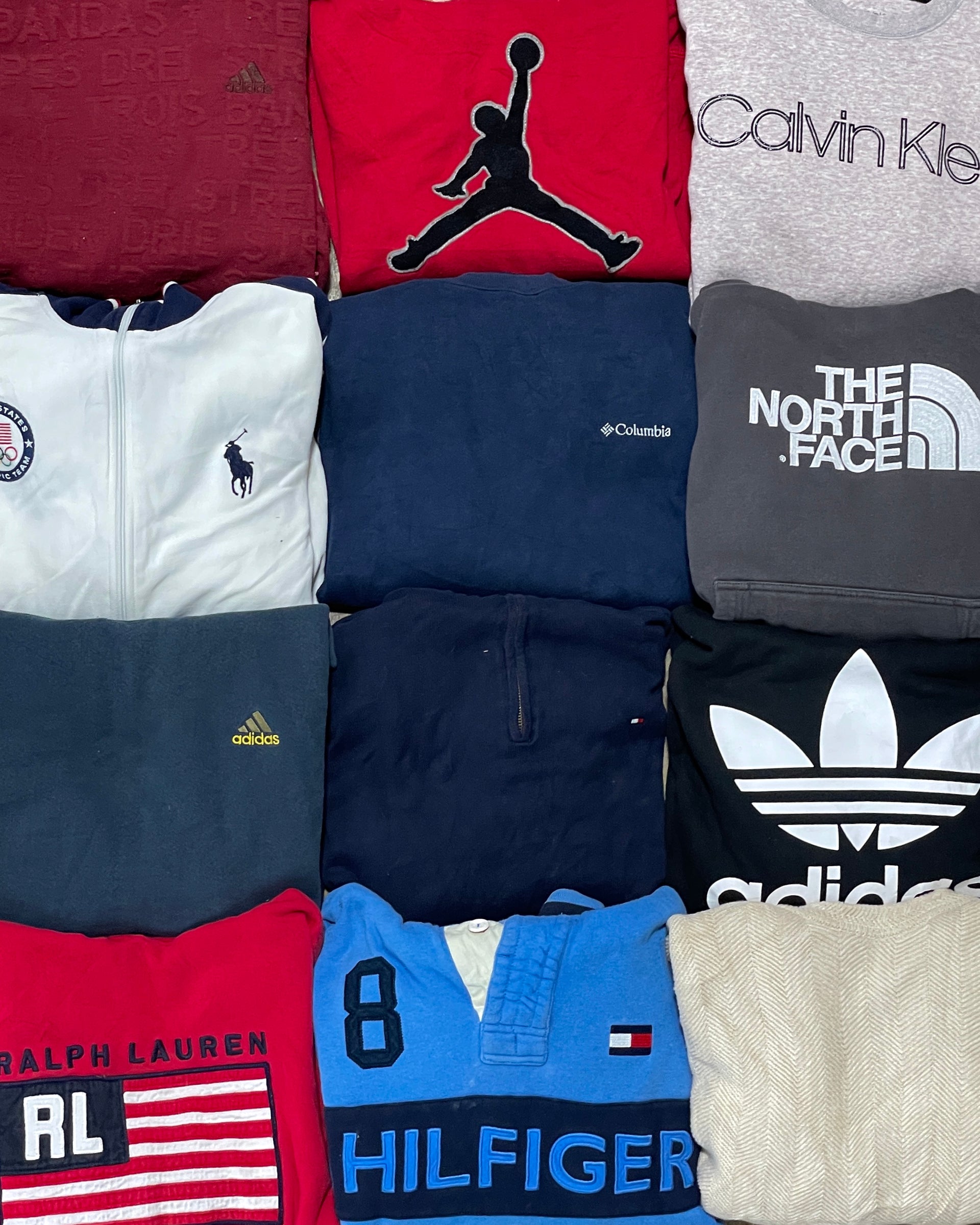What Makes Branded Clothing Ideal for Sensitive Skin?
What Makes Branded Clothing Ideal for Sensitive Skin?
Blog Article
The Relevance of Sustainable Garments: Exactly How It Impacts the Setting and Your Wardrobe
Lasting apparel is progressively acknowledged for its crucial function in lessening the environmental influence of the rapid garment industry. By concentrating on environmentally friendly products and ethical manufacturing methods, it resolves pressing environmental worries. This shift not just benefits the earth yet likewise affects consumer selections, causing a much more thoughtful strategy to wardrobe monitoring. Understanding these characteristics increases crucial questions concerning fashion's future and individual responsibility in forming it.
The Ecological Impact of Quick Style

Advantages of Lasting Products
Lasting products supply significant advantages, specifically via environment-friendly textile options that minimize ecological damage. These products likewise demonstrate toughness and long life, decreasing the need for constant replacements. Therefore, they add to a more lasting garment industry and advertise accountable consumer habits.
Eco-Friendly Fabric Options
While the garment industry has actually long been related to quick fads and environmental damage, the rise of environment-friendly fabric options provides a transformative possibility. Lasting materials such as organic cotton, hemp, and Tencel have acquired appeal due to their reduced ecological influence. These textiles are frequently generated without harmful chemicals and call for less water, decreasing their carbon impact - Branded Clothing. Additionally, many eco-friendly materials are biodegradable, adding to a circular economy by minimizing waste. Picking sustainable materials not just sustains ecologically accountable practices however likewise promotes much healthier ecological communities. As customers end up being much more knowledgeable about their purchasing power, the demand for environment-friendly textiles encourages brand names to innovate and embrace more lasting production techniques, eventually benefiting the earth and future generations
Longevity and Durability Advantages
Many consumers are significantly identifying the toughness and long life benefits of lasting materials in their garments options. Unlike traditional materials, sustainable products such as organic cotton, hemp, and recycled polyester are crafted to stand up to damage, resulting in garments that last much longer. This minimized regularity of replacement not just saves customers cash in time but also decreases waste generated by rapid style. On top of that, lasting clothing commonly utilizes environment-friendly production methods that boost material toughness, adding to a decrease in the overall carbon footprint. By investing in resilient clothing, consumers can grow a more lasting wardrobe while taking pleasure in premium pieces that preserve their aesthetic and functionality in time. Subsequently, longevity and long life stand as key advantages of selecting lasting products.
Lowering Waste Via Lasting Practices
Decreasing waste in the style market can be achieved with cutting-edge methods such as upcycling and repurposing products. In addition, taking on minimal wardrobe strategies encourages customers to prioritize top quality over amount, ultimately decreasing clothes usage. With each other, these techniques contribute substantially to a more lasting apparel version.
Upcycling and Repurposing Materials
Upcycling and repurposing products have become innovative methods in the style industry, changing thrown out textiles into valuable brand-new products. This approach not just reduces waste but likewise urges imagination and individuality in apparel layout. By taking old garments and materials, developers can develop distinct pieces that show personal design while lowering the need for brand-new resources. In addition, upcycling commonly needs much less energy and water compared to standard production procedures, greatly reducing the ecological footprint of fashion. As consumers come to be much more familiar with sustainability, the popularity of upcycled clothing remains to increase, advertising a round economic situation. Ultimately, these practices add to a much more lasting future, where style prioritizes environmental health and wellness over rapid production and intake.

Minimalist Closet Approaches
As people progressively seek to lessen their environmental influence, embracing minimal closet methods has acquired traction as an efficient strategy to lasting fashion. These techniques stress high quality over quantity, motivating customers to curate a smaller collection of versatile, resilient clothes. By concentrating on ageless items that can be mixed and matched, people can decrease the frequency of purchases and inevitably decrease waste.Additionally, minimalism promotes mindful usage, urging consumers to show on the environmental and ethical implications of their selections. This strategy not just cultivates a much more lasting way of life but additionally simplifies daily decision-making relating to attire. As people embrace minimal concepts, they contribute to a fashion society that values sustainability and accountable consumerism, inevitably resulting in a much more eco-conscious culture.
The Role of Moral Labor in Lasting Fashion
While many customers are significantly aware of the ecological consequences of their apparel options, the importance of honest labor methods in sustainable style discover this can not be neglected. Ethical labor encompasses fair earnings, safe working conditions, and regard for workers' rights, creating the foundation of accountable fashion production. Brands that focus on moral labor not only boost neighborhoods but additionally established a requirement for accountability in the industry.Moreover, the combination of ethical techniques cultivates openness, enabling customers to make informed options regarding their acquisitions. This technique contrasts sharply with quick style's exploitative labor designs, which often prioritize revenue over people. By sustaining companies committed to honest labor, consumers add to a system that values human self-respect along with ecological sustainability. As a result, honest labor is not simply an add-on; it is important to the more comprehensive mission of lasting fashion, ensuring that the quest for eco-friendliness does not come at the expense of human legal rights.
The Effect of Lasting Apparel on Carbon Emissions
Sustainable clothes has the prospective to significantly minimize carbon emissions connected with the garment industry. Typical garment manufacturing adds notably to greenhouse gas discharges, mainly as a result of energy-intensive manufacturing procedures and using non-renewable resources. On the other hand, sustainable style concentrates on green products, such as natural cotton or recycled fibers, which usually call for much less energy to produce.Moreover, lasting brands have a tendency to adopt extra reliable manufacturing methods, reducing waste and reducing general emissions. By focusing on sturdiness and timeless style, sustainable clothing urges consumers to buy less frequently, further minimizing the carbon footprint associated with overconsumption.Additionally, several sustainable brand names are devoted to transparency in their supply chains, enabling consumers to make informed selections that align with their values. Eventually, moving towards sustainable clothes can result in a substantial decrease in carbon exhausts, adding to a healthier planet and a more sustainable future for the apparel industry.
Sustaining Regional Economies With Lasting Selections
The change towards lasting clothes not only addresses environmental issues however additionally significantly advantages local economic climates. By choosing sustainable fashion, consumers typically support little services and local craftsmens, enhancing neighborhood strength. These business usually run on a smaller scale, focusing on workmanship and ethical methods over mass production.Investing in locally made sustainable clothing promotes work production and promotes financial growth within areas. As consumers end up being a lot more knowledgeable about the environmental influence of their purchases, they significantly seek out products that mirror their values. This need encourages neighborhood producers to embrace lasting practices, adding to a round economy.Moreover, sustaining neighborhood organizations minimizes transport discharges, lining up with eco-conscious consumer behavior. The interconnectedness of sustainable apparel and local economic situations emphasizes the important function that individual selections play in advertising both click over here now environmental and financial health. By fostering these local connections, communities can flourish while likewise working in the direction of an extra lasting future.
Changing Your Wardrobe: Tips for a Lasting Closet
As individuals look for to reduce their environmental impact, transforming a storage room right into a sustainable closet ends up being a crucial step. One effective technique is to examine existing apparel, keeping only things that are worn routinely and that align with sustainability objectives. Focusing on quality over quantity is important; purchasing sturdy pieces from environment-friendly brands can significantly lower waste.Additionally, integrating second-hand items can revive a closet while minimizing environmental damages. Organizing clothes swaps with friends or contributing extra things can further promote sustainability.When shopping, individuals must seek products that are organic, recycled, or biodegradable, and prevent fast fashion merchants - Branded Clothing. Practicing mindful usage by thoughtfully thinking about each acquisition can add to a more sustainable way of life. By carrying out these pointers, one can develop a closet that mirrors personal style while supporting environmental stewardship
Frequently Asked Questions
Exactly How Can I Determine Sustainable Clothes Brands?
To recognize lasting garments brand names, one need to research materials used, look for certifications like Fair Trade, and analyze the brand's transparency regarding their manufacturing procedures, labor methods, and environmental impact, guaranteeing environment-friendly and moral techniques are prioritized.
What Are the Costs Related To Sustainable Fashion?
The costs related to lasting fashion can differ substantially. Greater manufacturing expenses, moral sourcing, and green products commonly result in increased market prices, which may prevent some consumers while appealing to eco aware buyers.
Can Lasting Apparel Be Trendy and stylish?
Sustainable clothes can certainly be fashionable and elegant. Designers progressively prioritize innovative materials and moral manufacturing methods, showing that fashion and sustainability can coexist. Customers now have diverse options that blend looks with environmental consciousness.
Just How Does Laundering Clothes Affect Their Sustainability?
Cleaning garments greatly influences sustainability by consuming water and energy, contributing to contamination, and creating microplastic release. Frequent cleaning can weaken fabrics, shortening their life-span and boosting the demand for replacements, ultimately exacerbating environmental worries.
What Is the Life-span of Lasting Apparel Compared to Rapid Fashion?
The lifespan of sustainable garments generally surpasses that of quick fashion products, typically long-term numerous years as a result of high quality materials and craftsmanship. In contrast, fast fashion garments may degrade rapidly, necessitating more frequent replacements. Lasting apparel is increasingly identified for its critical role in lessening the ecological influence of the fast fashion sector. While several customers are significantly conscious of the environmental repercussions of their clothes choices, the significance of ethical labor methods in site link sustainable fashion can not be forgotten. Branded Clothing. Lasting clothes has the potential to greatly lower carbon discharges connected with the fashion industry. In comparison, sustainable style focuses on green materials, such as natural cotton or recycled fibers, which often call for much less power to produce.Moreover, sustainable brand names tend to take on much more efficient manufacturing practices, minimizing waste and reducing overall exhausts. By focusing on longevity and classic design, lasting garments motivates customers to get less often, more decreasing the carbon impact connected with overconsumption.Additionally, lots of sustainable brands are committed to transparency in their supply chains, enabling customers to make educated selections that line up with their worths
Report this page